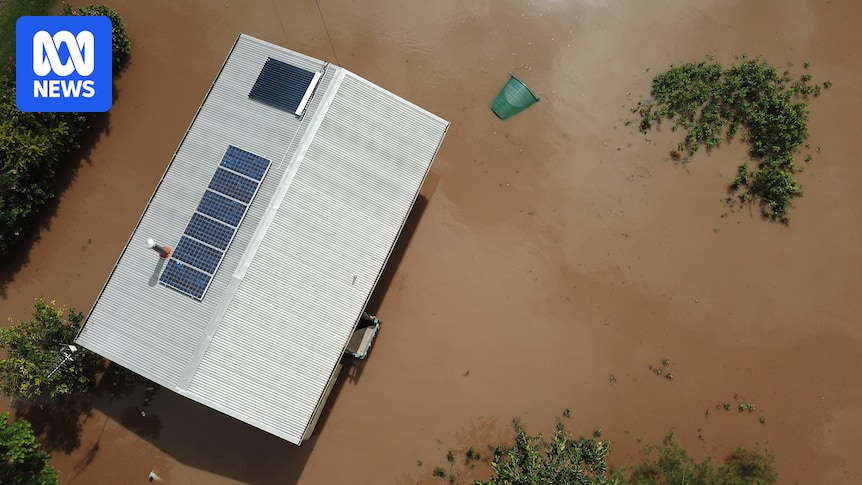
A major insurer is cautioning Australians about impending increases in home insurance premiums, attributing this trend partly to the intensification of severe weather events. A report from Insurance Australia Group (IAG) highlights the growing risk to communities as climate change advances, with severe storms, including hailstorms, predicted to impact densely populated areas in southern Australia.
William McDonnell, IAG’s Chief Financial Officer, emphasized in an interview with The Business that climate change will increasingly influence premium hikes unless swift actions are implemented. “The price of insurance is driven by a whole range of factors, including the costs of repair, which have been increasing, regardless of natural perils,” McDonnell explained. “But the component that relates to natural perils … that is gradually increasing, particularly in the areas that are more exposed or becoming more exposed to these perils.”
Despite these challenges, McDonnell assured that the insurance group, which includes well-known brands like NRMA Insurance and CGU, has “very strong reinsurance protection” to “stabilise and moderate” the impact of such events on premiums.
Hailstorms: A Growing Threat to Populated Areas
The Severe Weather in a Changing Climate report, co-authored by IAG and the US National Science Foundation’s National Centre for Atmospheric Research, identifies severe convective storms, including hailstorms, as some of the most frequent and damaging weather hazards in Australia. These storms produce extreme wind gusts, large-to-giant hail, tornadoes, and intense short-duration rainfall.
Recently, south-east and southern Queensland experienced two days of giant hail, reaching up to 8 centimeters, resulting in nine injuries. The Insurance Council of Australia reported over 2,500 claims due to these storms.
“Recent research shows a noticeable rise in large hail events, particularly in major urban areas, with evidence suggesting a southward expansion of hail-prone regions and more hail days along the Melbourne–Sydney–Brisbane corridor,”
the report stated. “Atmospheric conditions have become increasingly favourable for hail over the past 30 years in Australia’s most densely populated regions.”
Increasing Intensity of Natural Events
McDonnell further highlighted the growing intensity of natural events in Australia, noting that both ends of the weather spectrum are becoming more extreme. “We can see that storms accelerate faster,” he noted. “Strangely, things are getting both wetter and drier, so we expect the droughts are worse. There are fewer mild rainy days, but there are going to be more intense downpours.”
The report also underscores the escalating risks of bushfires, driven by hotter, drier, and more fire-prone conditions than previously predicted by climate models.
“Rising temperatures are leading to more days with extreme weather conditions conducive to uncontrollable bushfires, while shifting rainfall patterns are reducing soil and fuel moisture in some areas, creating continuous, fire-supportive landscapes,”
the report read.
Additionally, tropical cyclones are expected to become “potentially windier and wetter,” maintaining intensity further from the tropics, which increases risks in areas like south-east Queensland, New South Wales, and south-west Western Australia, where buildings are not designed to withstand mid-to-high-end category cyclones.
Since 2020, Australia has faced 14 declared catastrophes and eight significant weather events, with the insurance industry paying $22.5 billion in insured costs for extreme weather events over the past five years, marking a 67% increase from the previous five years.
Urgent Calls for Collective Action
IAG is advocating for urgent measures to enhance the resilience of buildings and infrastructure, aiming to mitigate long-term risks. McDonnell stressed the importance of transitioning to a low-carbon economy and adapting to climate change to reduce risks. “As well as doing our part to transition to a low carbon economy and help to reduce the whole problem [climate change], what’s very important is we take the steps that we need to in Australia to reduce the risks and help Australia adapt and be resilient in the face of this,” he said.
James Done from the US National Science Foundation’s National Centre for Atmospheric Research, a co-author of the report, called for a collective and urgent effort from all sectors, emphasizing the need to integrate scientific understanding with risk mitigation and adaptation strategies. “We now know the warming and moistening of our atmosphere, driven by increasing emissions, is a key driver of the uplift in volatile weather,” Dr. Done stated.
In response to these challenges, the Australian Labor government has set ambitious targets to reduce emissions by 62–70% below 2005 levels by 2035 and achieve net zero emissions by 2050. However, this target has sparked political debate, particularly within the Coalition, as the Nationals have formally withdrawn their commitment to reach net zero by 2050.
McDonnell dismissed suggestions that insurance companies exaggerate climate risks to justify higher premiums, emphasizing IAG’s longstanding commitment to climate action. “We’ve sponsored this research before, we’re updating it now, and we think that’s the right thing to do for our communities, for Australia to be able to be prepared for what we know is the increasing weather risks that are coming,” he affirmed.
The report recommends establishing consistent state and federal guidelines on natural hazard risk tolerance and supports the creation of a national property-level hazard database to inform development decisions and building codes that reflect changing hazard profiles. It also suggests that major infrastructure planning should consider a 100-year horizon to accommodate climate projections.







